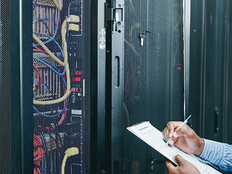Technology Gets Out of the Way in Weber County, Utah
Many local governments believe that libraries will play an important role in the future of technology in their municipalities. Just because printed books are declining in popularity doesn't mean that citizens don't need access to information; they depend on libraries for more than just historical resources.
For example, access to the web has reached critical mass, leading some employers to rely on the Internet when a job opening needs to be filled. And for prospective employees who have a slow Internet connection or no access at all, libraries provide that service, which is vital to the job search and application process.
The role of the library in society is evolving, but not fundamentally changing. In Utah, the Weber County Library is embracing technology wholeheartedly:
Gone are the days in which a patron stands in line while a staff member punches in each book individually. All of the library branches now rely on a scanning system.
The scanners are part of a number of technological upgrades across the Weber County Library system.
“It’s a lot faster and I’m liking it better,” Ogden resident Stephanie Friesen said. “You don’t have to stand in front of the counter, waiting in line with more people than there are behind it.”
Along with the scanners, the library has installed flat screen televisions, which serve as digital signs, in most of the branches. The final branch, North, got its own set of digital signs last week.
Read Weber County Library gets tech-savvy on the Standard Examiner.
The Results Are In: Technology Wins
Weber County library employees are finding that technology is bringing them closer to patrons. Rather than spending time at the checkout counter, staff members can work one-on-one with patrons.
“I want to take the most simple clerical tasks that technology can manage and let technology manage them,” Weber County Library Technical Director Scott Jones said. “If we let the technology do these tasks, we give them the opportunity to make more of those intellectual interactions with the public.”
Along with freeing up library staff, the scanners provide more privacy for patrons.
A patron could check out material on sensitive medical information without having to show anyone, Jones said.
After a bit of instructions, almost all patrons have accepted the scanners, giving the library a usage rate near 100 percent.
A small change like this can have a major impact on users' experiences at their local libraries and lead to return visits. Gradual change is the key to bringing libraries into the 21st century and making them a dynamic and useful part of the community.
For more information, check out our list of essential library technology blogs.








